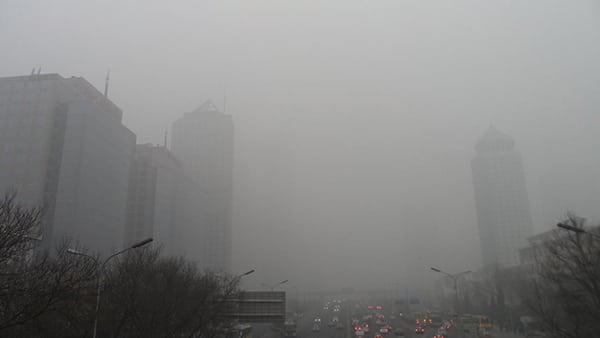Is China Considering Carbon Targets?
China, the world’s biggest emitter of greenhouse gases (GHGs) could limit its total carbon dioxide (CO2) emissions for the first time, possibly starting in 2016. He Jiankun, chairman of China’s Advisory Committee on Climate Change, reportedly told conference attendees in Beijing in June—one day after the U.S. Environmental Protection Agency proposed rules to slash carbon emitted from existing power plants by 30% from 2005 levels by 2030—that China “will use two ways to control CO2 emissions in the next five-year plan: by intensity and an absolute cap,” he said.
He, a high-level advisor and not a government official, later told news agency Reuters that the comments were a “personal view,” but the announcement stirred up optimism from clean energy policy groups. Experts have pointed out that China has been reluctant to establish a binding carbon target, cautioning that the announcement did not mean anything substantive. The country set its first-ever emissions cut—40% to 45% by 2020, compared to 2005 levels—relative to its economic growth, which means absolute carbon emissions could still grow as China’s economy expands.
Many of China’s cities are plagued with severe air quality problems, inciting widespread concerns and protests. Among the worst hit is the capital Beijing (Figure 1), which during 2013 endured a total of 189 polluted air days—when residents were advised to stay indoors as fine particulate levels soared. This January, the city introduced an “all-out effort,” setting targets to tackle smog by 2017 by scrapping old cars, suspending polluting industries, and reducing coal burning.
Last September, meanwhile, China announced it would put in place a national plan to reduce its dependence on coal to improve air quality. Clean-up efforts are showing progress, albeit slow, said the country’s environmental watchdog in the “2013 Report on the State of the Environment in China,” which was released in early June. Only three of 74 cities that adopted revised air quality standards achieved required levels of sulfur dioxide, nitrogen oxides, fine particulates, carbon monoxide, and ozone. To achieve additional progress, China would further enhance the country’s energy efficiency and optimize the industrial structure, as well as enhance regional cooperation, a senior environmental protection official said as the report was released.
In related news, China’s government this May invited private companies to participate in 80 major national projects, including hydropower, solar energy, wind power, and oil and gas pipelines. The move is a boost for reforms to increase privatization because, as observers note, state-owned investment ventures in energy, information, and infrastructure have a combined outstanding debt of $3 trillion as of June last year, Reuters reports.
Investor concern over unsustainable debts in China’s emerging markets were spotlighted this March, when Suntech Power Holdings—the world’s largest producer of solar panels—defaulted on a $541 million bond and other outstanding loans, marking the first-ever default of a Chinese multinational company.
Suntech’s troubles are said to have followed the plunge in solar module prices as production outpaced demand. In March, Shanghai Chaori Solar Energy Science and Technology Co. also missed payment on debt, signaling China’s first onshore bond default. That event was seen as a test case for the Chinese government, which investors had assumed would bail out any Chinese corporation in danger of defaulting.
Among sectors open to new investors are State Grid Corp.’s distributed power grids and electric vehicle charging equipment, which have an estimated market value of $32 billion, state media reported. China’s state-controlled grid operator has called for a $100 billion infrastructure project to build a nationwide network of ultra-high-voltage links to reduce long-distance power losses and as a means to tackle fine particulates and other air pollution. However, skeptics have questioned the project’s feasibility and high costs.
—Sonal Patel, associate editor (@POWERmagazine, @sonalcpatel)
